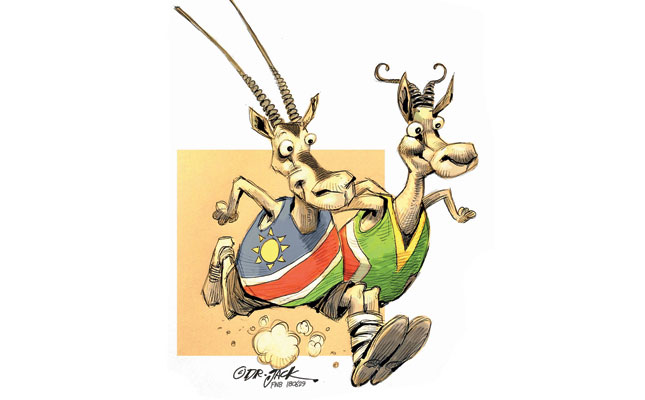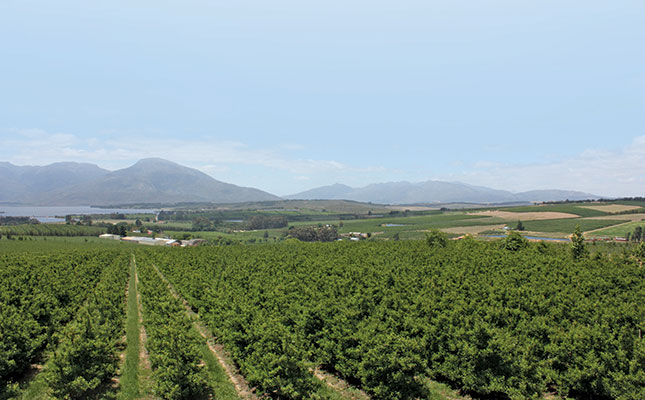
Photo: By Dr jack
South Africa is Namibia’s main trading partner in livestock, meat and meat products due to the two countries’ economic integration and geographic location.
This has led to an increase in trade over time. According to Trading Economics, South Africa realised a positive trading balance of R30 billion a year with Namibia for the period 2015 to 2017.
South Africa’s GDP is approximately 30 times greater than that of Namibia. Both countries belong to the Southern African Customs Union, and are thus bound by similar reciprocal trade agreements.
They are also part of the Common Monetary Area, with the Namibian dollar pegged to the rand at 1:1. Fluctuations in the rand therefore affect Namibia, and its economic growth and interest rates are also largely affected by South Africa’s economic conditions.
The bulk of Namibia’s imports come from South Africa, and Namibia exports most of its products to South Africa. Despite this interdependence, both countries are protected by policies within their own economies.
For example, Namibia pays more for tariff-protected South African goods, such as motor vehicles, because of the tax imposed on them.
Similarly, some small industries in Namibia, such as poultry, are protected to ensure they do not get wiped out by large, established corporations. The Namibian dairy industry, however, is labour-intensive, produces less than 1% of the amount of raw milk produced in South Africa, and has no protection from import surges. It faces threats of closure due to a lack of economies of scale and the sale of imported UHT milk at low prices that cannot be matched by local producers.
Land reform
Namibia’s land ownership is made up of 32,6 million hectares of communal land, registered in the name of the government, and 37,5 million hectares of title deed areas, registered in the names of individual owners. Namibia’s land reform process started during the 1980s.
Since 1995, the state has had the first right of refusal to buy land that comes onto the market. Should it not be interested in the purchase, the owner has the right to sell it on the open market.
Due to a successful land reform process in Namibia so far, previously disadvantaged individuals and government own 9,2 million hectares of title deed areas in the country.
Thus, 60% of land in Namibia belongs to government or previously disadvantaged individuals.
The recent ANC policy decision to investigate the expropriation of land without compensation may have an influence on the political landscape in Namibia. In October 2018, the country will hold its second national land conference since 1990, and highly emotional remarks have already been expressed regarding ancestral land claims.
Agriculture markets
Namibia is a net exporter of cattle, sheep and goats, and a net importer of grain, feed, sugar, dairy, poultry, pork, fruit and vegetables.
South Africa, on the other hand, is a net importer of beef and lamb, and a net exporter of maize, which means that South African farmers can feed their cattle more cheaply than their Namibian counterparts, giving them a competitive edge.
Feedlots in Namibia are not financially viable, as beef is sold at export parity prices, while animal feed is transported from other African countries.
While the Namibian livestock sector’s main export market is South Africa, Namibia’s small industries have to compete with agricultural and input supplies imported primarily from South Africa.
These include fertiliser, seeds, veterinary products, livestock feed, fencing material and machinery.
At the same time, a large South African export market exists in Namibia for long-life milk, chicken, fruit, vegetables, maize and wheat, among others.
According to statistics compiled by the Meat Board of Namibia, more than 12 000t of beef, mutton, pork and processed meat products were imported annually for the period 2015 to 2017, while more than 12 000t of chicken (35% of total Namibian consumption) were imported annually.
Namibia has negotiated export market opportunities for beef to some of the most lucrative markets in the world, including the EU and Norway. However, the volume of beef exported to the rest of the world is still far less than what is exported as live animals or beef and mutton to South Africa.
From 2012 to 2017, Namibia exported more than 17 000t of beef, mutton and processed products a year to South Africa and the rest of the world, as well as approximately 67 000t of live cattle, sheep and goats exclusively to South Africa.
Total beef consumption in South Africa is estimated at 800 000t a year, while total exports of live cattle from Namibia to South Africa equates to 210 000 head annually.
If these exports are converted to carcass weight, only 3% of the carcass weight consumed in South Africa originates from the export of live weaner calves to South African feedlots.
South African feedlots slaughter about 1,8 million head of cattle annually. The total intake of live cattle from Namibia therefore represents only 11% of total intake.
Mutual benefit
It is clear that Namibia relies on available market opportunities in South Africa
for its export products. The production potential of the Namibian livestock sector is not expected to grow much in the future, and the contribution of Namibian exports of livestock and meat will remain less than 10% of total meat consumption in South Africa.
The two countries have different comparative advantages, and these should be used to enhance trade and economic development in both Namibia and South Africa. Similarly, certain industries need to be protected to sustain existing job levels and create new employment opportunities.
Namibia and South Africa are closely linked both politically and economically.
Let us therefore respect and support each other, and give our industries a fair chance to develop for the benefit of all of us
The views expressed in our weekly opinion piece do not necessarily reflect those of Farmer’s Weekly.
For more information, email Roelie Venter at [email protected].










